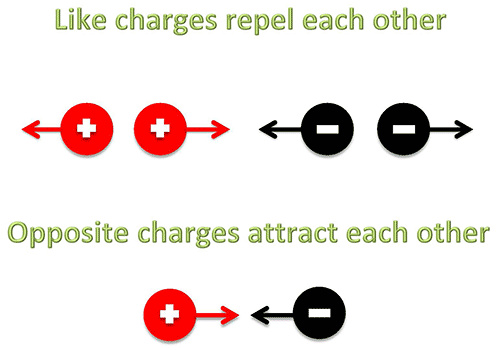Learn
Electric Charge
All things are made of atoms and all atoms are made of protonspositively charged particles, neutronsparticles with no charge and electronsnegatively charged particles . Each proton and electron of each atom is equal in strength. When the number of protons equals the number of electrons, the atom has a neutral charge.
The electrons are free to move around the atom and move to other atoms during bonding.
- When an atom loses electrons, it has more protons than electrons.
- Therefore, the atom has more positive charges than negative charges.
- It will have overall positive charge.
- When an atom gains electrons, it has more electrons than protons.
- Therefore, it has more negatively charged particles, which gives the atom an overall negative charge.
- Remember, a charged atom is called an ion.
When you think of electricity and how it powers many of the things you use every day, I bet you don't think about those electrical charges coming from subatomic particles!
Take a look at this PhET Balloon Simulation to see how electrical charges interact. When you open the simulation, pick up the balloon and rub it on the sweater.
What happens to the balloon?
What happens to the sweater?
Electric Force
So, in the PhET Balloon Simulation you just tried, what happened to the balloon and the sweater after you gave them each a charge?
Hopefully, you have realized before now that two charged particles have a type of force that exists between them. There was obviously a force between the sweater and the balloon that caused them to stick together. That force is often called an electric force.

An electric force is the attractive or repulsive force, which acts on two charged objects or charged particles.
Let’s now look at how the electric forces of these charges particles interact.

First, all charges either attract or repel. Like charges will repel each other, while opposite charges will attract.
So, a positive charge will attract a negative charge and repel another positive charge.
Second, the electric force between objects is directly affected by the amount of electrical charge on the object. So a charged object with a greater positive charge can exert more force than one with a lower positive charge.